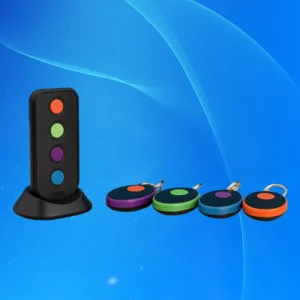Market & Technology Trends
This article presents a comprehensive Xreal One analysis, focusing on both market performance and product engineering. As part of our broader Xreal One market analysis, we explore where this product fits into current trends in AR display technology. With increasing demand for lightweight wearable displays, our Xreal One performance analysis highlights what makes this model competitive in 2025. In addition, we provide Xreal One hardware analysis insights—covering structure, components, and real-world feedback. This sets the foundation for deeper Xreal One engineering analysis further down the article.
Xreal One Performance Analysis
From a Xreal One performance analysis perspective, the device delivers solid value across four core categories:
- Display & Optics
Features dual Sony 0.55″ 1080p micro-OLEDs, supporting 120Hz refresh rate and ~600 nits brightness. It simulates up to a 147″ virtual screen. - Weight & Comfort
At ~79g, it’s one of the lightest AR devices. Customers highlight long-session usability with minimal fatigue. - Audio Quality
Open-ear Bose-tuned speakers offer clear stereo sound without full isolation. Ideal for media consumption in semi-public environments. - Plug-and-Play UX
USB-C DP Alt Mode ensures fast setup across many host devices. The X1 chip helps reduce latency and maintain screen sync.
These performance metrics indicate solid optimization for video-first use, not gaming or interaction-heavy AR.
Pain Points & Challenges
While the Xreal One engineering analysis shows high integration quality, several product challenges remain:
- FOV Limitation
At ~50°, the field of view can feel narrow compared to headset alternatives. - Adhesive-Based Assembly
Teardown reveals glued optical parts, complicating repair and upgrade. This raises durability concerns and leads users to ask: “What materials are used in Xreal One?” and “Why did my Xreal One fail?” - Thermal Buildup
Extended use (~4 hours) creates noticeable warmth near the temple area. - Accessory Ecosystem
Prescription lens holders and some cables are sold separately, adding setup friction.
Competitive Landscape
Here’s a brief Xreal One comparison with competitors:
| Model | Display | Weight | FOV | Notable Feature |
|---|---|---|---|---|
| Xreal One | 1080p x2 OLED, 120Hz | ~79g | ~50° | Balanced clarity & comfort |
| RayNeo Air 3S | 1080p OLED + dimming | ~85g | ~46° | Electrochromic lens |
| Rokid Max | OLED, 1920×1080 | ~83g | ~50° | App integration |
| Xreal One Pro | Upgraded FOV & brightness | ~87g | ~57° | Electrochromic shading |
Despite strong optics, Xreal One design flaws such as fixed components and minimal shading options may limit user satisfaction in bright conditions.
Innovation Opportunities
To stay competitive and address customer pain points, here are 4 innovation directions:
- Modular Optics Block
Create a snap-in display module to reduce repair complexity. - Dynamic Shading Layer
Add a built-in electrochromic film for ambient light filtering. - Enhanced Cooling Path
Incorporate micro heat sinks or conductive temple strips. - Plug-In Ecosystem
Offer native prescription lens frames, magnetic adapters, and travel-ready bundles.
These would address frequent concerns like “how to make Xreal One more durable?” and broaden use cases.
WokooDesign’s Solution
With over 10 years of experience in optical product development, WokooDesign offers end-to-end engineering services for wearable AR:
- AR Optics Design: Birdbath, pancake, and waveguide module design, simulation, and testing
- Thermal & PCB Simulation: Analyze heat dissipation paths and signal flow via custom FPC/PCB layouts
- Modular Construction Engineering: Apply screw-fit and shell-swap strategies to optimize repairability
- Prototype to Production: Injection mold development, BOM cost-down, and DFM handoff for ODM scale
We help clients take concepts further with full-stack teardown-to-redesign support.
Xreal One Analysis Conclusion
This Xreal One hardware analysis confirms it as a well-balanced AR wearable focused on personal display performance. Its lightweight build, crisp visuals, and universal compatibility make it suitable for casual and mobile media consumption.
However, to remain competitive through 2025, next-gen designs should improve modularity, durability, and thermal comfort—areas where WokooDesign can provide actionable support.
Related Articles
- Xreal One Teardown: Internal Structure & Parts List
- Xreal One Review: Performance & Customer Feedback
- Xreal One ODM Case Study: Redesign for Brand Clients
👉 If you’re planning to upgrade your brand or launch a better version of Xreal One, contact WokooDesign. We offer free design proposals, teardown evaluations, and volume support for hardware innovators.


